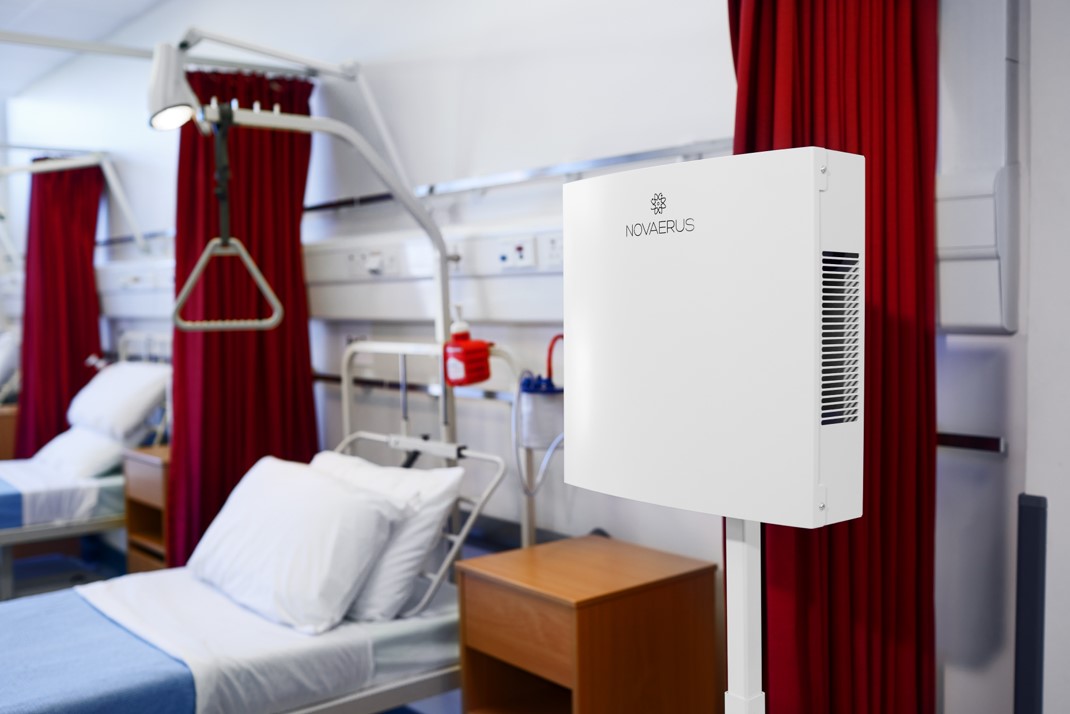Is Air Disinfection the Missing Piece of Infection Control in the healthcare settings

With 6 million people in Europe and USA contracting a hospital-acquired (HAI) infection every year, it’s clear that the current system is not doing enough. Currently, in hospitals, hand-hygiene and surface cleaning are the primary infection control protocols used. According to WHO, 30% of patients, of high-income countries, in ICU are affected by at least one hospital-acquired infection*. Such figures just highlight the need for additional strategies. The missing piece in this is air disinfection, which is not widely or commonly used outside if operating theatres.
Research has shown that airborne pathogens cause 20% of surgical wound infections* that are acquired within the hospital setting. Such data demonstrates the need for better air disinfection protocols in addition to the current preventative measures used in hospitals currently such as control of temperature, humidity, air pressure and HEPA filtration.
Air disinfection technologies are currently in use, albite highly underutilised and come with significant drawbacks, they include;
- Hydrogen Peroxide Fogging/Misting has rapid antimicrobial activity in gaseous form. Using Hydrogen peroxide will also allow for rooms/spaces to be cleaned and areas reached that cannot be by traditional disinfection methods. The problem with using hydrogen peroxide in gaseous form is that its harmful and so can only be used in an empty room.
- UV germicidal irradiation is a method that uses a device to emit ultraviolet C type light (the most harmful UV band, usually filtered by Ozone layer before reaching us) to disinfect surfaces and spaces in a room. Does not leave residues and has a broad spectrum of action with rapid exposure times. UVC is harmful and so can only be used in vacant rooms.
The problem with such solutions is that they are point-in-time solutions, and they will only disinfect the air at that moment. Air currents bring with them new sources of contamination continuously with people being the biggest source of contamination in a room. Every time they enter a room, they emit pathogens into the air by breathing, talking, walking, shedding skin cells, etc. The emphasis of air disinfection is about reducing the bioburden by the use of technology that works continuously in the room with the patients and staff. This is considered a risk mitigation strategy in infection control.
One of the best technology that can be utilised to overcome the drawbacks of current air disinfection systems is ultra-low cold plasma technology brought by Novaerus. The plasma discharge released by Novaerus devices kill microorganisms and is entirely safe for use in patient rooms 24/7.
Another innovative technology available is that by Rensair. Their air purification devices use the combination of 2 technologies to both trap and kill pathogens. The device takes in the air passing it over filters, second of which is a high-grade HEPA filter. At the centre of the air purifier is a UVC lamp that emits onto the HEPA filter and so killing the pathogens that are trapped. This overcomes the drawback of HEPA filters, that they can become colonised by viable pathogens trapped in them.
Both Rensair and Novaerus technologies are portable and easy to implement within hospital settings. They don’t require alterations to buildings or installation. For hospitals to incorporate either into their infection control protocols will go a long way to reduce the risk of hospital-acquired infections that costs many lives every year.
References :
https://www.who.int/gpsc/country_work/gpsc_ccisc_fact_sheet_en.pdf?ua=12.
https://www.infectioncontroltoday.com/view/developing-case-implementation-operating-room-air-decontamination-technology
